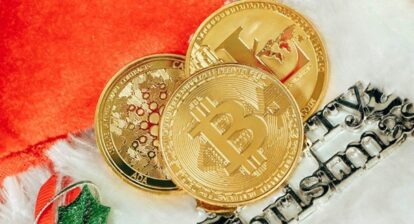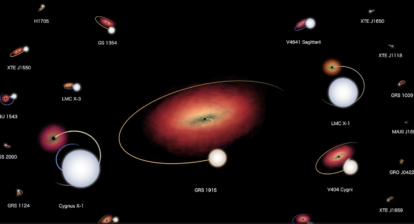From time to time, we have to tweak our clocks to keep pace with slight variations in the rate of Earth’s rotation. New research finds that melting ice in Greenland and Antarctica might affect when that next adjustment comes.
As ice melts into water and flows toward the equator, it redistributes mass around the planet—and this process marginally slows the rate of Earth’s rotation, according to a new study published Wednesday in the journal Nature.
The findings suggest climate change’s wide-ranging impacts might also include global timekeeping.
“This is another one of those ‘this has never happened before’ things that we’re seeing from global warming: the idea that this effect is large enough to change the rotation of the entire Earth,” Duncan Agnew, the author of the study and a geophysicist at the University of California, San Diego (UCSD), tells Scientific American’s Avery Schuyler Nunn.
“It will have a bigger contribution as time goes on and as melt accelerates, as we expect it’s likely to do,” Thomas Herring, a geophysicist at the Massachusetts Institute of Technology who did not contribute to the findings, says to NBC News’ Evan Bush.
For most of human history, we have demarcated the passage of time by Earth’s rotation, with a second defined as a small fraction of the period it takes for the planet to spin once around its axis. But Earth’s spin rate changes slightly over time. So, in 1955, scientists started measuring seconds using the resonance of cesium atoms, a more stable timekeeping method.
Despite the accuracy of these “atomic clocks,” they diverge slightly from Earth’s rotation due to the planet’s variable spin rate. To compensate, officials have occasionally added one second to our clocks to realign them with the Earth’s rotation. Such “leap seconds” were added 23 times between 1972 and 1999.
Factors that influence the Earth’s spin rate include the friction of ocean tides, caused in part by the tug of the moon’s gravity. Even the sun’s gravity and earthquakes can have an impact, according to Science News’ Carolyn Gramling.
One large influence is the spin of Earth’s core, which has been slowing down, according to the study. In turn, the solid part of the planet is rotating more quickly. This acceleration has brought the Earth’s rotation more in line with atomic clocks—since 1999, only four leap seconds have been added.
If Earth’s spin rate continues to slightly increase, eventually officials won’t need to add leap seconds anymore. Instead, they might have to do something unprecedented: subtract a leap second. And this could cause major problems for timekeepers.
Despite their short duration, leap seconds are far from insignificant: Adding one can lead to major failures in computing systems, Elizabeth Donley, chief of the time and frequency division at the National Institute of Standards and Technology (NIST), who was not involved in the research, tells Nature News’ Elizabeth Gibney. Leap seconds can disrupt satellite, financial and energy transmission systems that depend on precise clocks, writes NBC News.
While some systems have software to allow for the addition of a second, few allow for a second to be erased, according to the paper.
“A negative leap second has never been added or tested, so the problems it could create are without precedent,” Patrizia Tavella, a member of the Time Department at the International Bureau of Weights and Measures in France, writes in an article accompanying the new study.
Melting ice sheets play into this process in the opposite way, Agnew suggests. Working against the accelerating rotation caused by the changes in Earth’s core, ice melt shifts mass toward the equator, which actually slows the planet’s spin.
Agnew explains this phenomenon to NBC News with an analogy to a figure skater. “If you have a skater who starts spinning, if she lowers her arms or stretches out her legs, she will slow down,” he tells the publication.
Scientists have been debating whether to subtract a leap second in the future, and the melting ice could give them more time to decide. As a result of the climate change-driven melting, our clocks might not need to lose a leap second until 2029. Without the ice melt, the subtracted second might have been needed as soon as 2026, according to the paper.
“It’s so interesting how multifaceted the impacts of ice melts are,” Kylie Kinne, an oceanographer at UCSD who did not contribute to the findings, tells Scientific American. “We keep discovering new ways that [ice melt] is changing the climate and planet, and this study really highlights that.”
The findings assume Earth’s acceleration continues at the same rate, but the core’s activity is almost impossible to predict, Christian Bizouard, an astrogeophysicist at the International Earth Rotation and Reference Systems Service in France who was not involved in the research, notes to Nature News.
“There’s a very great uncertainty about this,” Judah Levine, a physicist at NIST who did not contribute to the findings, says to the Washington Post’s Joel Achenbach. “A few years ago, there were predictions in the other direction.”
This article was first published here.







